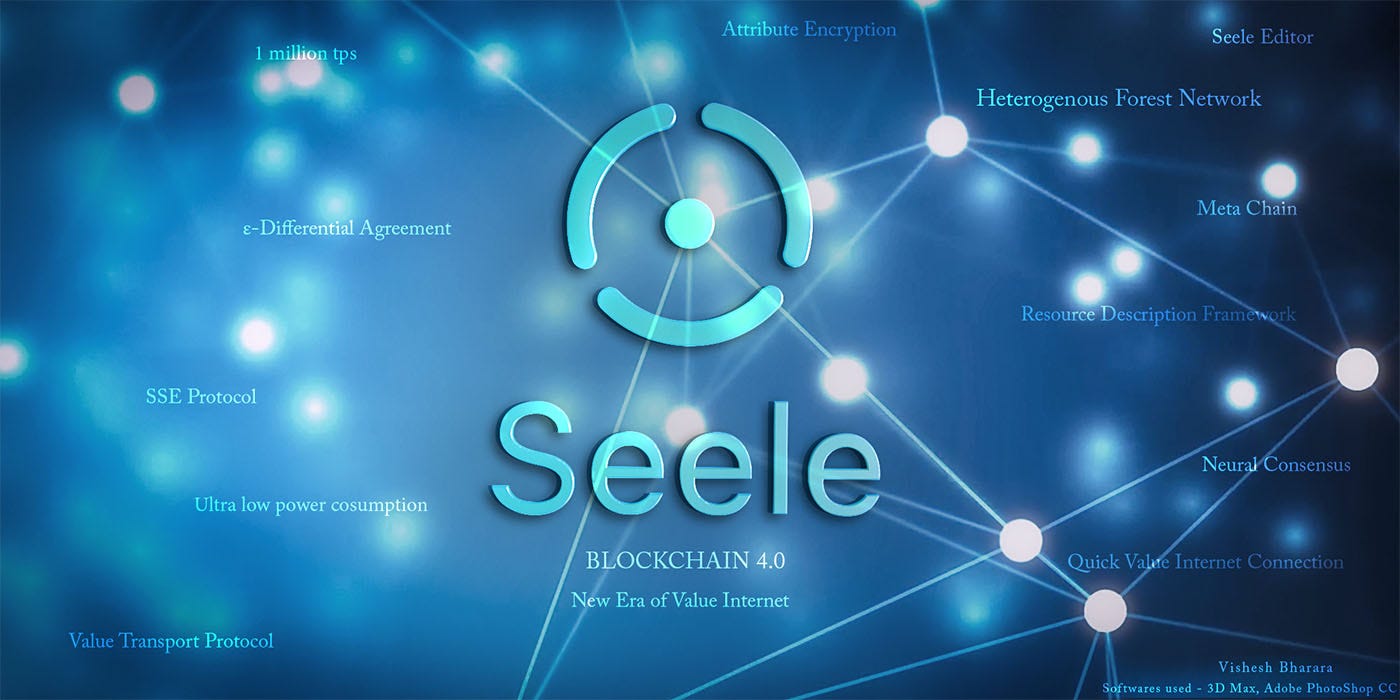Hi fellows, We are here to discuss this very interesting upcoming project “Seele”.
Seele BlockChain 4.0 [ brief summary by Vishesh Bharara ]

Hi fellows, We are here to discuss this very interesting upcoming project “Seele”. Seele in German means Soul. Seele is Blockchain 4.0
The Goal of Seele is to innovate “The New Era of Value Internet”
Now you may ask which are BlockChain 1.0, 2.0 and 3.0 and why we need another BlockChain ?
Bitcoin → BlockChain 1.0 → It can handle 5 to 7 transactions per second.
Ethereum → BlockChain 2.0 → It can handle 20 to 30 transactions per second.
Cosmos, Dfinity → BlockChain 3.0 → It can handle 10,000 transactions per second.
Now comes Seele
Seele → BlockChain 4.0 → It can handle 1 Million transactions per second.
This is super Amazing!!!!
Interesting point is VISA which we all use daily has speed of only 60,000 transactions per second.
SSE Protocol — Any BlockChain to be implemented in real world large scale scenarios, it must have Scalability, Security and Efficiency. The BlockChain must not compromise on any of these 3 factors.
Lets take an example of EOS BlockChain which is 3.0. It can realize the tps of 1 million per second.
Now one may ask, Wow we have EOS than why we need Seele than?
What EOS is doing is it is achieving this at the expense of security as the agent nodes of a fixed amount are susceptible to attacks. So, it is compromising on Security protocol.
Seele is that’s why special. It is achieving 1 million tps without compromising the Scalability, Security and Efficiency.
Neural Consensus Algorithm — The seele is able to achieve Scalability, Security and Efficiency using ε-differential agreement (EDA) algorithm called Neural Consensus.
There are other Algorithms which are used by other BlockChains like
1. POW — Proof of Work
2. POS — Proof of Stake
3. DPOS — Delegated Proof of Stake
4. pBFT — Practical Byzantine Fault Tolerance
5. Hash graph
All of these, no matter how advanced these are all subject to SSE paradox.
Neural Consensus is efficient when up to 40% of the nodes in the network are either failed or malicious.
While pBFT fails when the number of malicious nodes is greater than 33%.
Seele based on EDA has ultra-low power consumption and high concurrency capability.
Heterogenous Forest Network — Bitcoin, Ethereum etc. are all single chain structure and all transactions take place on one chain. However, with the development of blockchain technology, single chain architecture exposes lots of problems like very low tps, cross chain interaction not achievable.
In order to overcome this Multiple BlockChain structure was proposed. These multichain like parallel chains, side chain / main chain and so on, they only partially meet the diversified needs of the business. There are still some shortcomings in terms of flexibility and customization.
Now comes the Forest BlockChain Structure — This structure can meet different types of business needs in the real world. It looks like this ->

Value Transport Protocol — The current blockchain networks is not able to communicate with each other. They are working like independent BlockChain islands.
To solve this problem, Seele proposes the Value Transport Protocol based on the Forest Heterogeneous network architecture.
Quick Value Internet Connection — BlockChain nodes are located all over the world resulting in network latency which can seriously affect the consensus algorithm. Seele proposes Quick Value Internet Connection protocol to solve this issue.
Computing Integration — Resources on the BlockChain is based on consensus because it has reliability and security.
The Naming Value Transfer Protocol uses a hierarchical structured naming method to name the information in the chain.
The Meta-Data-Directory Specifications is used to describe the original data features of off-chain storage. Seele extends MDDS. A Resource Description Framework is proposed.
Data Privacy and Confidentiality — Through intelligent contracts, the data is dispatched to the execution environment in the encapsulated sandbox.
Attribute Encryption — Attribute based encryption ensures that non-authorized users will not be able to access specific data.
Security Multi-party Computing — With the use of multi-party cryptography algorithm, the multi-party data combination computing is completed without compromising the data of each other party.
Developer Ecology — In order to get a better development, a public BlockChain needs to attract developers to invest in the overall development of the platform like DApp’s
Selle has developed a complete contract development tool that is SeeleEditor which can be used by developers for further development of DApp’s etc.
Economic System — Seele consensus algorithm has a good feature that the more nodes join in, the higher the consensus efficiency is and the shorter the transaction confirmation time is.
Token mechanism is used for two things:-
1. To reward participated nodes with tokens
2. To charge transaction fees
Incentive in Seele is based on the principle of efficiency and fairness.
Tokens are rewarded to the final deal convergence nodes as a way of token issuance. Also nodes can also get certain transaction fee as reward.
Governance Structure — In Seele, the governance power stems from the token holder who delegates to the block builder. The block builder election is part of Seele. The BlockChain can only be changed upon the approval of block builders.
That’s all folks. I hope I have covered most of the aspects of Seele BlockChain 4.0.
It’s a Solid Project. Go for it !!!
I have designed a graphic depicting the special features of Seele, here it is -
